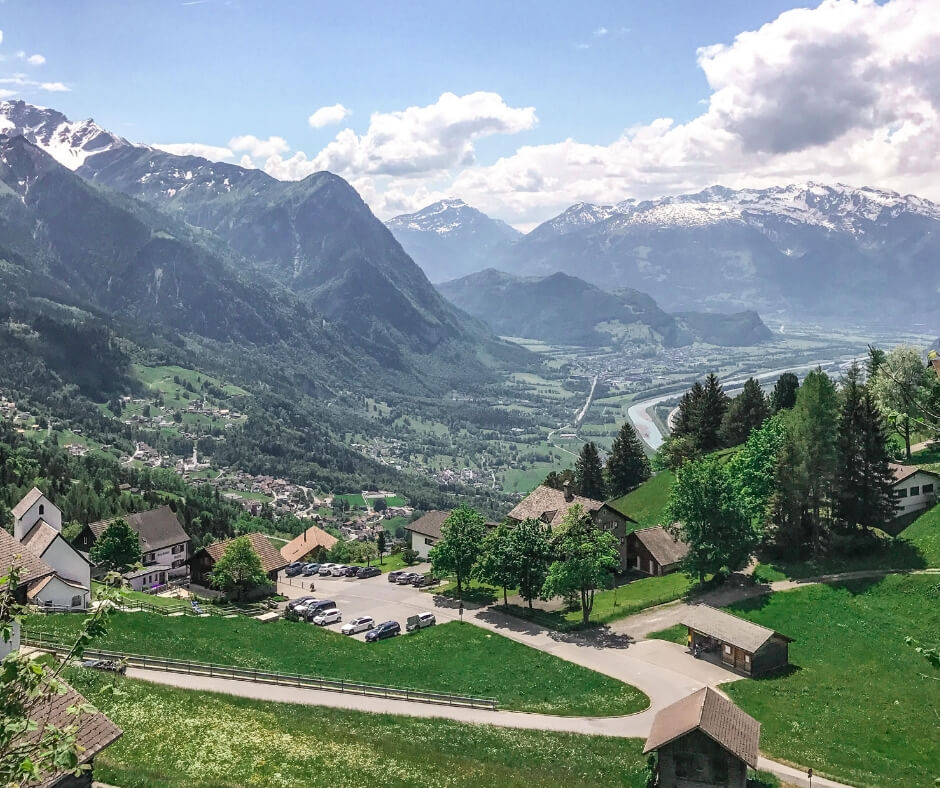When it comes to planning a trip to Europe, timing can make all the difference. Whether you’re seeking vibrant city experiences, tranquil countryside retreats, or coastal escapades, understanding the best times to visit each destination can elevate your travel experience. In this comprehensive guide, I’m going to delve into insights from McKinsey research to unveil the optimal timing for exploring Europe’s diverse landscapes, cultures, and attractions.

For no crowds: January to February
When winter wraps Europe in a blanket of tranquility, the end of January to the beginning of February emerges as an ideal window for travelers seeking to explore iconic destinations without the usual hustle and bustle. From the romantic streets of Paris to the snow-dusted landscapes of Switzerland, this period offers a serene backdrop for immersive experiences.
- Paris, France: As the City of Light embraces the winter chill, visitors can marvel at the architectural splendor of landmarks like the Eiffel Tower and Notre-Dame Cathedral without contending with long queues. Indulge in leisurely walks along the Seine River, admiring the city’s enchanting bridges and waterfront vistas. Warm up with steaming cups of hot chocolate at quaint cafes, savoring the city’s culinary delights.
- Swiss Alps, Switzerland: For enthusiasts of snow sports and alpine vistas, the Swiss Alps beckon with their pristine slopes and picturesque villages. Explore world-renowned ski resorts like Zermatt and St. Moritz, where powdery snow and clear skies create an idyllic playground for skiing, snowboarding, and winter hiking. After exhilarating outdoor adventures, unwind in cozy chalets and savor hearty Swiss cuisine by crackling fireplaces.
- Vienna, Austria: In the heart of Europe, Vienna exudes timeless elegance and cultural richness, enhanced by the winter charm of late January and early February. Delight in exploring imperial palaces, such as Schönbrunn Palace and Belvedere Palace, adorned with festive decorations and hosting seasonal events. Attend classical concerts and opera performances in historic venues, immersing yourself in Vienna’s musical legacy.
- Prague, Czech Republic: With its fairytale architecture and cobblestone streets, Prague captivates visitors year-round, but the tranquility of late winter lends an added layer of enchantment. Wander through the historic Old Town Square, admiring Gothic landmarks like the Astronomical Clock and Týn Church against a backdrop of snow-dusted rooftops. Indulge in hearty Czech cuisine, from traditional goulash to savory dumplings, in cozy taverns tucked away in medieval alleyways.
- Edinburgh, Scotland: Embrace the mystical allure of Edinburgh during the quieter months of late January and early February, when the Scottish capital exudes a captivating blend of history and tradition. Explore Edinburgh Castle, perched atop an ancient volcanic rock, and stroll along the Royal Mile, where centuries of history come to life in charming shops and taverns. Immerse yourself in Scottish folklore and literary heritage with visits to landmarks like the Scott Monument and the Writers’ Museum.
For the best weather with few crowds: April and October
As spring blossoms across Europe and autumn paints landscapes in golden hues, April and the end of October emerge as prime periods for travelers seeking to bask in favorable weather conditions while avoiding peak tourist crowds. From the sun-kissed shores of Barcelona to the historic charms of Rome, these months offer a delightful balance of pleasant temperatures and immersive experiences.
- Barcelona, Spain: With its Mediterranean climate and vibrant cultural scene, Barcelona beckons visitors to revel in the warmth of April or the tranquility of late October. Explore the architectural wonders of Antoni Gaudí, from the iconic Sagrada Família to the whimsical Park Güell, against a backdrop of blooming flowers and azure skies. Indulge in leisurely strolls along the bustling streets of La Rambla and savor tapas and sangria in lively outdoor cafes.
- Amalfi Coast, Italy: Nestled along the sun-drenched shores of southern Italy, the Amalfi Coast enchants travelers with its dramatic cliffs, pastel-hued villages, and crystalline waters. In April or late October, the coastal towns of Positano, Amalfi, and Ravello offer idyllic retreats away from the summer crowds. Embark on scenic drives along winding coastal roads, stopping to admire panoramic vistas and savor fresh seafood in charming seaside restaurants.
- Athens, Greece: Home to ancient ruins, Byzantine churches, and vibrant neighborhoods, Athens invites exploration during the temperate months of April and late October. Wander through the historic Acropolis, where the Parthenon stands as a testament to Greece’s classical heritage, and explore the bustling markets of Monastiraki. Bask in the warm Mediterranean sunshine as you savor traditional Greek cuisine in tavernas overlooking the azure waters of the Aegean Sea.
- Dubrovnik, Croatia: Renowned for its medieval walls, terracotta rooftops, and Adriatic vistas, Dubrovnik captivates visitors year-round, but April and late October offer a more laid-back ambiance. Embark on a stroll along the historic city walls, admiring panoramic views of the Old Town and shimmering sea below. Explore hidden alleys and charming squares, where centuries of history unfold amidst the timeless beauty of Croatia’s southern coast.
- Santorini, Greece: Famous for its dramatic sunsets, whitewashed buildings, and cliffside villages, Santorini exudes romantic allure during the shoulder seasons of April and late October. Wander through the winding streets of Oia and Fira, where stunning vistas await at every turn, and immerse yourself in the island’s rich history and culture at archaeological sites like Akrotiri. Indulge in leisurely sunbathing and swimming in the crystalline waters of the Aegean, savoring the tranquility of Santorini’s idyllic surroundings.
Best time during school holidays: End of June / Beginning of July
For families and educators seeking educational adventures and cultural experiences during school holidays, the end of June and beginning of July present an opportune time to explore Europe’s rich history, art, and traditions. From the ancient wonders of Rome to the fairy tale landscapes of Bavaria, these months offer a perfect blend of sunny weather and immersive activities for all ages.
- Rome, Italy: Steeped in millennia of history and art, Rome beckons families to explore its iconic landmarks and archaeological treasures during the end of June and beginning of July. Marvel at the majestic Colosseum, stroll through the ancient ruins of the Roman Forum, and admire masterpieces in the Vatican Museums, including Michelangelo’s Sistine Chapel ceiling. Beat the summer heat with gelato breaks in charming piazzas and indulge in traditional Roman cuisine at trattorias serving pasta, pizza, and fresh seafood.
- London, England: With its blend of royal palaces, world-class museums, and vibrant neighborhoods, London offers endless possibilities for family-friendly adventures during the school holidays. Visit iconic attractions like Buckingham Palace, the British Museum, and the Tower of London, where history comes to life through immersive exhibits and interactive tours. Embark on scenic river cruises along the Thames, explore green spaces like Hyde Park and Kensington Gardens, and enjoy West End theater productions and musical performances.
- Amsterdam, Netherlands: Known for its picturesque canals, historic architecture, and cultural diversity, Amsterdam captivates visitors of all ages with its charm and vitality. Explore the city’s iconic landmarks, including the Anne Frank House, the Van Gogh Museum, and the Rijksmuseum, where masterpieces by Rembrandt and Vermeer await. Discover the city’s vibrant neighborhoods by bike or boat, sampling Dutch delicacies like stroopwafels and bitterballen along the way.
- Munich, Germany: As the gateway to Bavaria, Munich offers a perfect blend of historic charm, cultural richness, and outdoor activities for families during the end of June and beginning of July. Explore the fairy tale landscapes of Neuschwanstein Castle and the Bavarian Alps, embark on scenic hikes and bike rides in the surrounding countryside, and indulge in traditional Bavarian cuisine, including pretzels, sausages, and beer. Don’t miss the opportunity to experience the lively atmosphere of Munich’s beer gardens and outdoor festivals, where music, food, and camaraderie abound.
- Dublin, Ireland: With its literary heritage, lively pubs, and scenic landscapes, Dublin promises memorable experiences for families during the school holidays. Explore historic sites like Trinity College and Dublin Castle, stroll along the River Liffey, and immerse yourselves in Irish culture through traditional music and dance performances. Venture outside the city to discover ancient ruins, scenic coastal trails, and picturesque villages, where stories of leprechauns and legends come to life.
When to avoid: End of August / Beginning of September
As summer draws to a close and popular European cities become inundated with tourists, travelers seeking a more authentic and tranquil experience may opt to explore lesser-known destinations off the beaten path. Here are four hidden gems to consider during the end of August and beginning of September:
- Ljubljana, Slovenia: Nestled between the Alps and the Adriatic Sea, Ljubljana captivates visitors with its fairytale charm, riverside cafes, and vibrant cultural scene. Explore the historic Old Town, adorned with Baroque architecture and cobblestone streets, and ascend to Ljubljana Castle for panoramic views of the city and surrounding countryside. Embark on day trips to nearby attractions like Lake Bled, Postojna Cave, and the Škocjan Caves, where natural beauty and cultural heritage converge.
- Český Krumlov, Czech Republic: Tucked away in the picturesque countryside of southern Bohemia, Český Krumlov enchants visitors with its medieval architecture, winding alleys, and scenic river views. Explore the UNESCO-listed Old Town, dominated by Český Krumlov Castle and its Baroque theater, and stroll along the Vltava River, where historic mills and charming cafes beckon. Immerse yourself in the town’s artistic heritage with visits to galleries and workshops showcasing traditional crafts like pottery and glassblowing.
- Sintra, Portugal: Known as the “Garden of Eden” and a UNESCO World Heritage site, Sintra is a haven of palaces, gardens, and lush forests just a short drive from Lisbon. Explore the whimsical architecture of Pena Palace, perched atop a verdant hilltop, and wander through the romantic gardens of Quinta da Regaleira, where hidden tunnels and mystical symbols await discovery. Hike through the Sintra-Cascais Natural Park, admiring panoramic views of the Atlantic coastline and exploring ancient ruins along the way.
- Tallinn, Estonia: With its well-preserved medieval Old Town, fortified city walls, and Hanseatic architecture, Tallinn transports visitors back in time to the days of knights and merchants. Explore cobblestone streets lined with colorful houses and historic landmarks like Toompea Castle, Alexander Nevsky Cathedral, and St. Olaf’s Church. Climb to the top of Tallinn’s medieval towers for sweeping views of the city and Baltic Sea, and savor traditional Estonian cuisine in cozy taverns and cafes.
As you embark on your European odyssey, armed with insights from McKinsey research and our destination spotlights, remember that the perfect time to visit is ultimately defined by your preferences, interests, and travel goals. Whether you seek cultural immersion, outdoor adventures, or culinary delights, Europe awaits with open arms, ready to enchant and inspire. So, seize the opportunity, plan wisely, and let the journey unfold, one unforgettable moment at a time.




